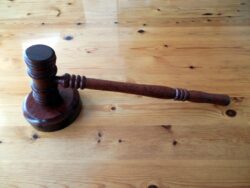4 Common Slip and Fall Neck Injuries With Compensation Amounts
This article elucidates the prevalent types of neck injuries resulting from slip and fall accidents. It delves into common causes of such incidents, immediate responses, and various compensation categories.

It also provides an insight into their potential compensation amounts. It seeks to create an understanding of the complex landscape surrounding these accidents, and offers guidance for navigating the consequent legal and medical pathways.
Key Takeaways
- Whiplash is a common neck injury resulting from sudden back-and-forth movement of the head, with compensation amounts ranging from $2,500 to $10,000.
- Cervical sprain is a neck injury caused by stretching or tearing of ligaments, with compensation amounts ranging from $5,000 to $15,000.
- Herniated disc is an injury where the cushioning discs between vertebrae rupture, with compensation amounts ranging from $20,000 to $100,000.
- Neck fracture is a break in one or more neck bones, with compensation amounts ranging from $50,000 to $200,000.
Understanding Slip and Fall Neck Injuries and Their Compensation Ranges
In the realm of slip and fall accidents, various neck injuries, ranging from whiplash to spinal cord damage, manifest with corresponding compensation amounts that span from $2,500 to potentially millions of dollars.
These compensation ranges are determined by the severity of the injury, the cost of medical treatment, and the legal implications of negligence on the part of the property owner.
For instance, a soft tissue injury like whiplash may attract compensation from $2,500 to $10,000. On the other hand, more severe injuries such as spinal cord damage could potentially yield compensation in the millions.
It is essential to understand these ranges and the legal implications involved in each case to maximize the potential compensation received following a slip and fall accident.
Identifying Common Causes of Slip and Fall Accidents
Identifying the frequent causes of such mishaps, it becomes evident that wet or slippery surfaces, uneven terrain, insufficient lighting, lack of handrails, and negligence in premises maintenance are the predominant factors contributing to accidents.
- Wet or Slippery Surfaces: These surfaces can be a result of spills, precipitation or cleaning processes. Preventing slip and fall accidents involves immediate addressing of these issues.
- Uneven Terrain: This includes sidewalks, potholes, or uneven flooring. Proper maintenance and regular inspections can mitigate these risks.
Insufficient lighting and lack of handrails significantly increase the likelihood of accidents. Lighting should be adequate in all areas, particularly stairwells and walkways. Handrails should be installed wherever necessary. Negligence in maintaining safe premises can result in liability in slip and fall cases, emphasizing the importance of diligent premises upkeep.
Immediate Actions to Take Following a Slip and Fall Accident
Prompt medical attention should be sought following any accident, ensuring that the severity and extent of injuries are correctly documented. This step is crucial for both health reasons and potential legal implications.
Thorough documentation of injuries allows for accurate assessment of compensation needs. Swift action in reporting the incident to relevant parties, such as property owners or managers, is also advised. Gathering information from witnesses who can provide firsthand accounts of the incident aids in building a strong case.
The importance of documenting injuries and the accident scene cannot be overstated. Finally, seeking legal advice is highly recommended. Legal experts can provide guidance on navigating the complex legal terrain, ensuring the best possible outcome in terms of compensation.
Evaluating the Different Types of Compensation for Slip and Fall Neck Injuries
Evaluating various types of remuneration for cervical trauma from accidents involves consideration of multiple factors. These factors include medical expenses, lost wages, pain and suffering, rehabilitation costs, and future damages. When evaluating compensation options, these factors play a pivotal role in determining the final compensation amount.
- Medical expenses: These encompass all charges related to medical care and treatment. This includes the initial treatment cost and ongoing care costs.
- Lost wages: This accounts for income lost due to injury and the recovery period. It includes the immediate loss of income and the future earning capacity.
Moreover, factors affecting compensation amounts include the severity of injury, the impact on quality of life, and the degree of negligence involved. Therefore, it is vital to accurately assess and document all these aspects to ensure fair and adequate compensation.
Frequently Asked Questions
How Can I Prove Negligence in a Slip and Fall Accident?
To establish negligence in a slip and fall accident, one must demonstrate that the property owner failed to maintain safe premises or provide adequate warning of hazards. Evidence may include photographs of the accident scene, maintenance records, or internal documents.
Witness testimonies can corroborate the claimant's account of the incident. Consulting with a legal professional can provide further guidance on gathering and presenting this crucial evidence.
Are There Any Time Limits for Filing a Slip and Fall Injury Claim?
Statutory interpretation reveals that time constraints for filing a slip and fall injury claim depend on jurisdiction, typically ranging from one to three years from the date of the accident. This legal time limit, known as the 'statute of limitations,' can, however, be subject to certain exceptions.
Legal assistance is strongly recommended for claimants to understand these complex regulations and to ensure timely submission of their claim, thereby protecting their rights to potential compensation.
How Is the Compensation Amount Determined in a Slip and Fall Case?
The compensation amount in a slip and fall case is determined by several factors. These factors include the severity of the injury, the extent of negligence by the property owner, and the financial impact of the injury. The insurance company's role is crucial in this process. It typically negotiates the compensation amount based on these factors.
Furthermore, the victim's future medical needs and their ability to work may also influence the final compensation amount.
Can I Still Receive Compensation if I Was Partially at Fault for the Accident?
In slip and fall cases, the doctrine of Comparative Negligence often applies. This principle allows for compensation even when the claimant is partially at fault for the accident. However, the compensation amount is typically reduced in accordance with the claimant's Fault Percentage.
The greater the claimant's fault, the more significant the reduction in compensation. Legal advice should be sought to navigate this complex area of personal injury law.
What Role Does an Attorney Play in a Slip and Fall Injury Case?
In slip and fall injury cases, an attorney plays a pivotal role. They provide legal guidance, gather evidence, negotiate with insurance companies, and represent clients in court if necessary.
Attorney selection should be based on experience, success in similar cases, and client satisfaction.
Legal fees in these cases often operate on a contingency basis, meaning the attorney's payment is a percentage of the compensation won, minimizing financial risk for the client.

This post has been generated by AI and was not reviewed by editors. This is Not legal advice. Please consult with an attorney.




